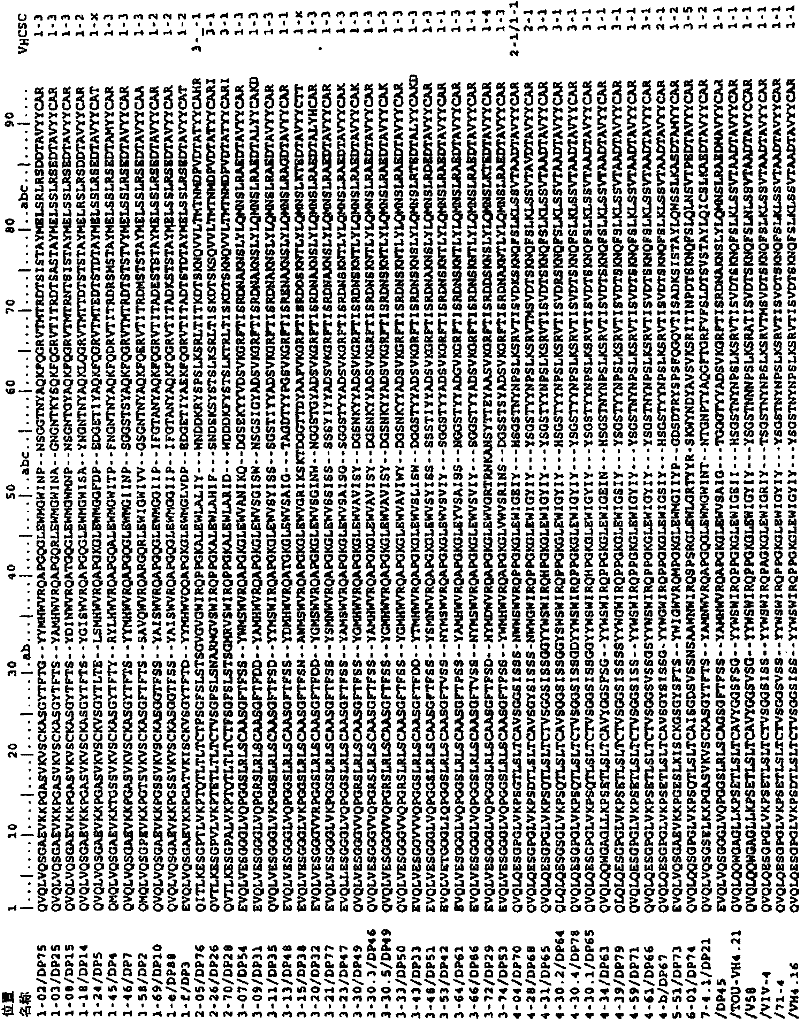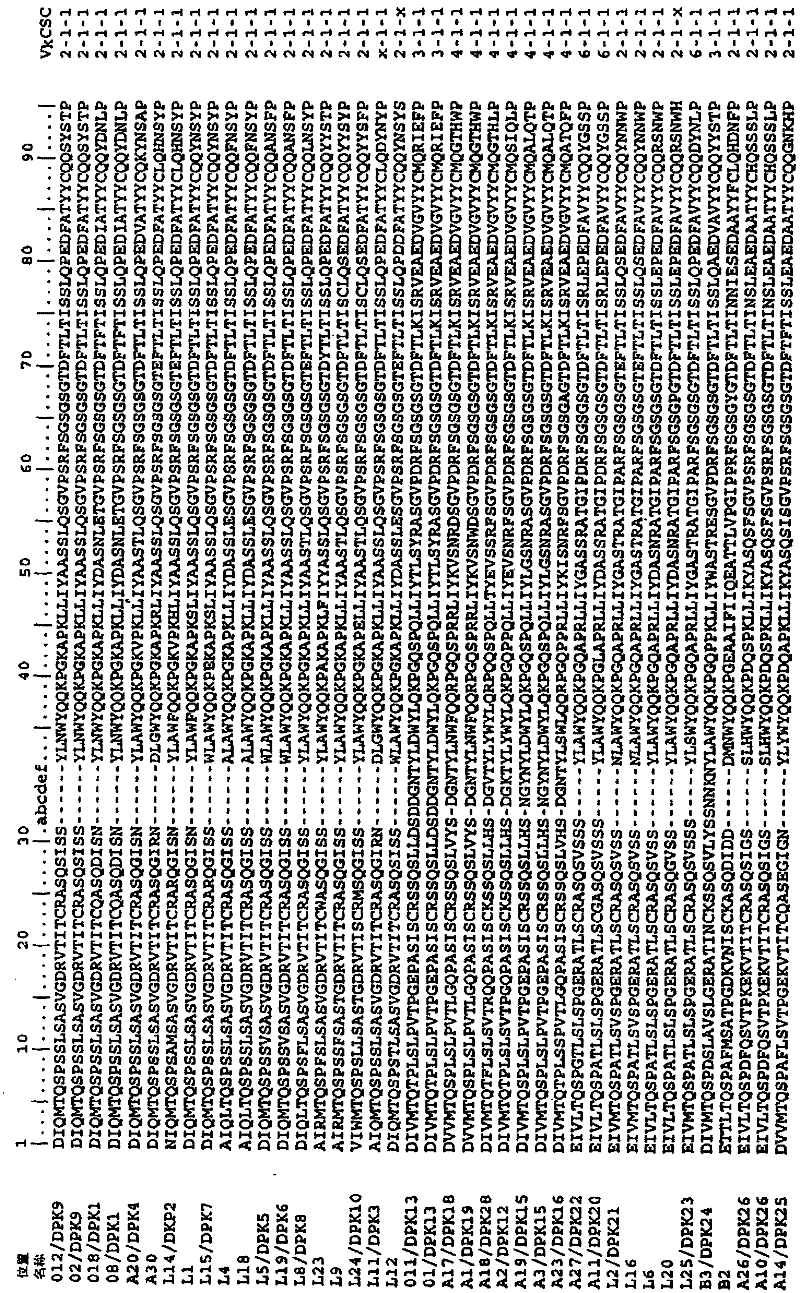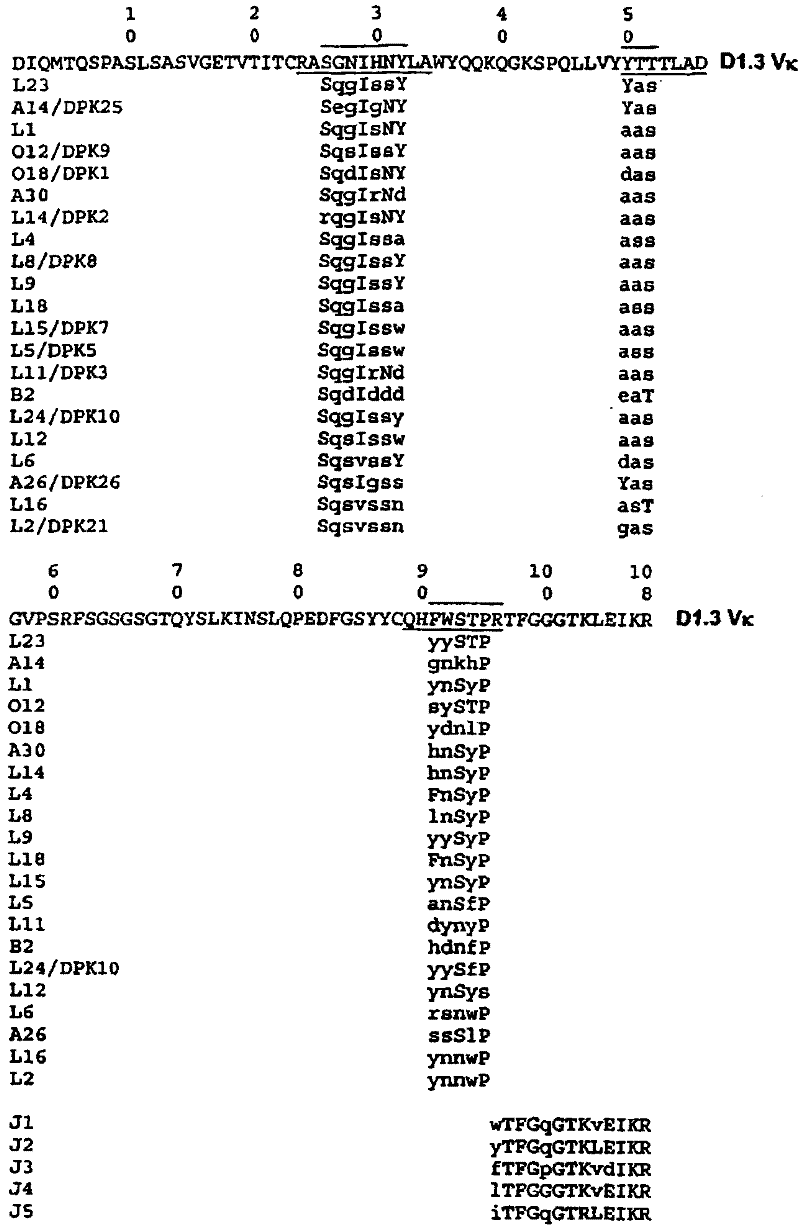Super-humanized antibody
A chimeric antibody, non-human technology, applied in the direction of hybrid immunoglobulin, etc., can solve problems such as no explanation
- Summary
- Abstract
- Description
- Claims
- Application Information
AI Technical Summary
Problems solved by technology
Method used
Image
Examples
Embodiment 1
[0098] Example 1. Humanized anti-chicken lysozyme antibody
[0099] Mouse antibody D1.3 binds to chicken lysozyme antigen. The peptide sequence of D1.3 variable region comes from the protein database, accession number 1VFA. The light chains are numbered according to Kabat, and the canonical structure type is assigned to the mouse CDR as follows.
[0100] The light chain CDR1 labeled according to Kabat consists of the following sequence:
[0101] 24 25 26 27 28 29 30 31 32 33 34
[0102] R A S G N I H N Y L A
[0103] Because there is no insertion or deletion between residues 27 and 31, CDR1 has a canonical structure type 2.
[0104] The light chain CDR2 labeled according to Kabat consists of the following sequence:
[0105] 50 51 52 53 54 55 56
[0106] Y T T T L A D
[0107] This is not a special sequence, its structure type is Type 1.
[0108] The light chain CDR3 labeled according to Kabat consists of the following sequence:
[0109] 89 90 91 92 93 94 95 96 97
[0110] Q H F W S T P R T
...
Embodiment 2
[0128] Example 2. Humanized anti-human CD28 antibody
[0129] The mouse anti-human CD28 antibody called 9.3 was used as the non-human antibody under study. The murine 9.3 hybridoma line was isolated, and Hansen et al. (1980) described the hybridoma line.
[0130] The heavy and light chain variable region genes of 9.3 were cloned by reverse transcription and polymerase chain reaction, starting from messenger RNA separated by the guanidinium isothiocyanate method (Chomczynski and Sacchi, 1987) and oligo dT column chromatography. The amplification is guided by oligonucleotides complementary to the constant region and oligonucleotides corresponding to the single peptide region or the N-terminal framework sequence.
[0131] Number the light chain according to Kabat and refer to Picture 8 , Assign the canonical structure type to the CDR as follows.
[0132] The light chain CDR1 numbered according to Kabat consists of the following sequence
[0133] 24 25 26 27 a b c d 28 29 30 31 32 33 34 ...
Embodiment 3
[0161] Example 3. Humanized anti-scorpion toxin antibody
[0162] The mouse anti-scorpion toxin antibody called BCF2 was used as a non-human sequence of humanized anti-scorpion toxin. Murine BCF2 hybridomas have been described, and Licea et al. (1996) demonstrated the effectiveness of BCF2 antibodies in murine models. Selisko et al. (1999) clarified the variable region sequence of BCF2, in Picture 12 These sequences are listed in.
[0163] As described above, the canonical structure type of the light chain is determined as CDR1 is type 5, CDR2 is type 1, and CDR3 is type 1. The canonical structure types of heavy chain CDRs are type 1 for CDR1 and type 2 for CDR2. Using the considerations discussed above for the selection of human germline V and J gene sequences, a humanized version of BCF2 was designed.
[0164] The composition of the light chain variable region is: the Kabat CDR sequence of the BCF2 light chain; and the framework sequence, which is consistent with human gene A2 / ...
PUM
| Property | Measurement | Unit |
|---|---|---|
| affinity | aaaaa | aaaaa |
Abstract
Description
Claims
Application Information
 Login to View More
Login to View More - R&D
- Intellectual Property
- Life Sciences
- Materials
- Tech Scout
- Unparalleled Data Quality
- Higher Quality Content
- 60% Fewer Hallucinations
Browse by: Latest US Patents, China's latest patents, Technical Efficacy Thesaurus, Application Domain, Technology Topic, Popular Technical Reports.
© 2025 PatSnap. All rights reserved.Legal|Privacy policy|Modern Slavery Act Transparency Statement|Sitemap|About US| Contact US: help@patsnap.com



